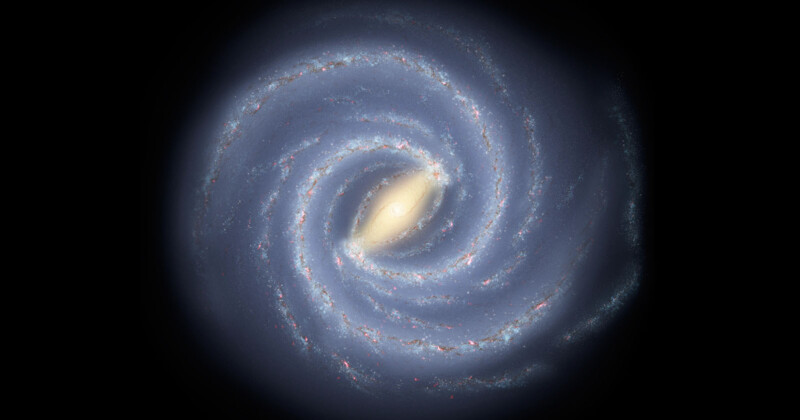Here’s Why There’s No Photos of the Entire Milky Way Galaxy

A former NASA analyst has taken to social media to explain why there are no photos of the entire Milky Way Galaxy and any pictures of it are illustrations.
Space communications specialist Alexandra Doten replied to a question on TikTok: “How do we know what our galaxy, the Milky Way, looks like?”
“There isn’t a single full photo of the Milky Way,” she explains. “Every full image you see of the Milky Way is an illustration. We cannot see the Milky Way like this, and I don’t think humans ever will.”
@astro_alexandra Replying to @walkieescobell how do we know what our galaxy, the milky way, looks like? #space #astronomy #nasa #science ♬ original sound – ASTRO ALEXANDRA 🪐
The reason for this is simple: To get a photo of the Milky Way, humans would have to fly far from the disc-shaped galaxy in a spacecraft; further than any human-made object has ever traveled.
Live Science likens it to Earth. The first time humanity ever saw a full photo of Earth was in 1972 when astronauts onboard Apollo 17 snapped the iconic Blue Marble image.

But that’s not to say we didn’t know what Earth’s shape was before 1972. We already knew it was imperfectly round thanks to careful study of the planet’s surface and gravity.
And that goes for the Milky Way, too. Although we are unable to capture a photo of the entire galaxy, we know we live in a spiral galaxy thanks to mapping the stars in the night sky; most of which are stars from our home galaxy.
“We can see how big [the Milky Way is] and where the center is,” explains Doten.
“We have photos pointing towards the center, we even have a photo of the black hole at the center of the Milky Way.
“We can see it’s pretty flat; it’s a disc shape. And we can see how many stars there are and what colors those stars are.
“We can see where those stars are and how they’re moving and then map the spiral arms of the Milky Way.”
Of course, photographers have been capturing parts of the Milky Way for centuries. If you’re interested in photographing our home galaxy, then why not read one of PetaPixel’s helpful guides.